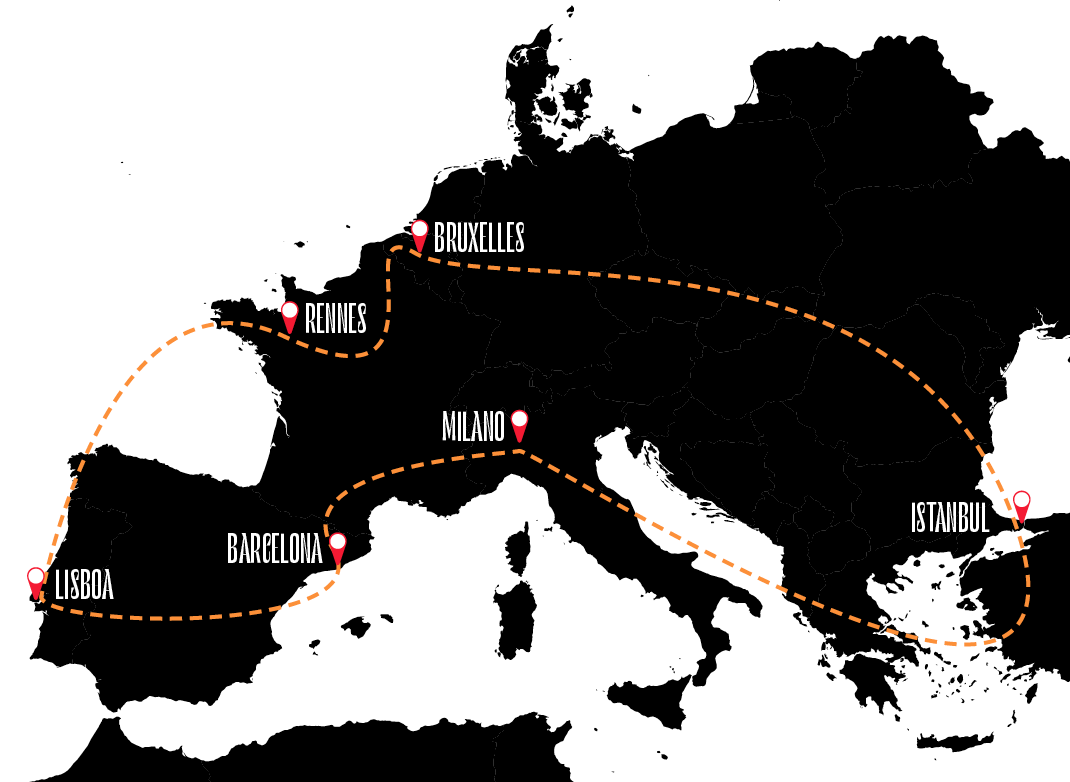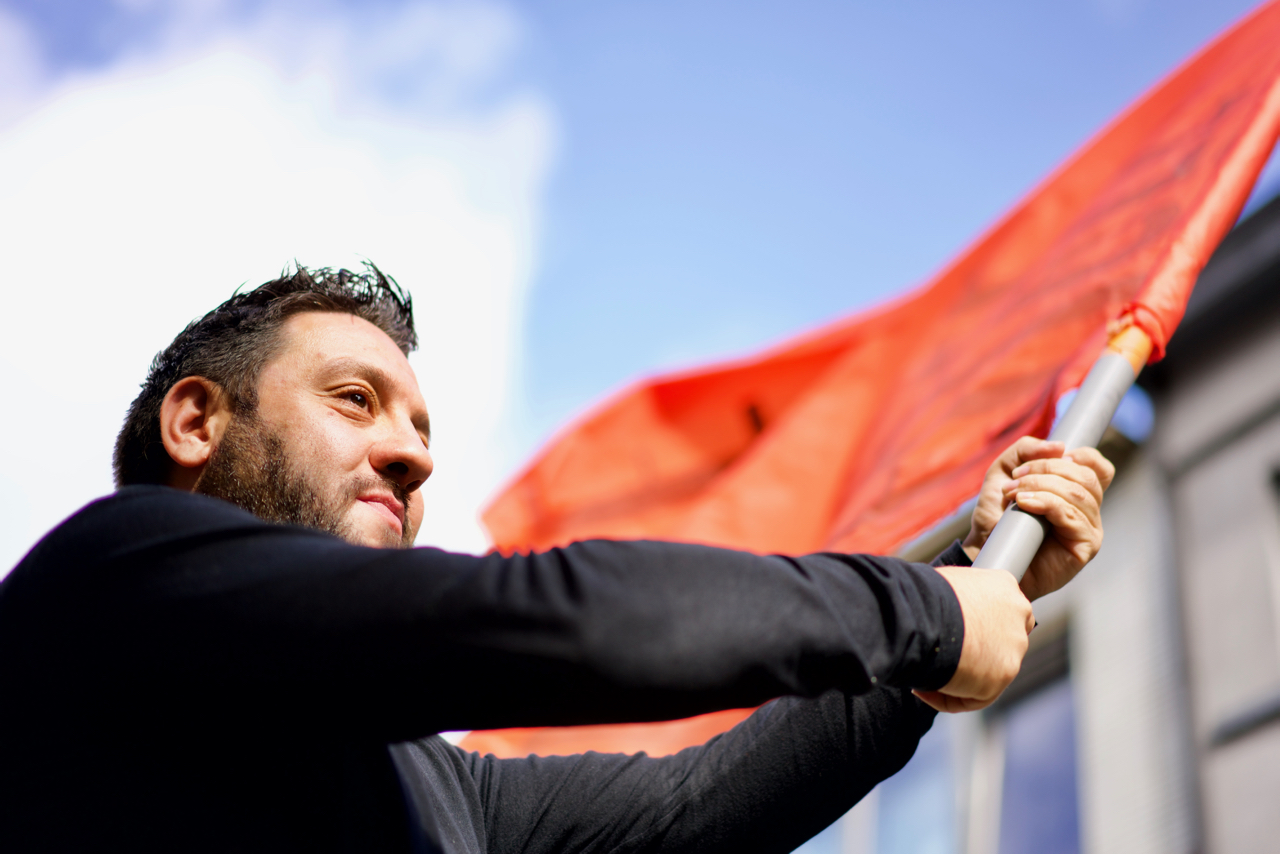The Distress Flare project was born out of a desire to open up a dialogue involving the wide range of groups that make up our modern societies (citizens, public decision-makers, the media, etc.) on the subject of the political and social experience of migrants in Europe today. The goal is to use artistic means of expression to give citizens a voice and to send a clear signal, one that should concern us all, with regards to the gradual loss of certain human values (hospitality, gratitude, caring for others).
The symbol of the distress flare is central to this project. Although it might appear at first as a somewhat negative image, there is also that sense of it being a beacon of hope, lighting the way towards a brighter future. Fired from the ground, when a distress flare lights up, it becomes a new marker, a focal point for perspectives and, above all else, a way of grabbing the attention of all of those present in order to encourage them to take action, to change their behaviour and to work together on “the people who need saving”. Fired from the ground towards the sky, the vertical trajectory of a distress flare also symbolises the way in which the project aims to force public decision-makers to consider the current plight of migrants.
The project follows up on the work carried out during the production of The Encyclopedia of migrants. The original idea was to create meaningful artworks that would encourage people to consider an eminently political matter using a sensitive, personal approach. The aim is to get us to question ourselves, both collectively and as individuals, about the future of our societies and the values that we want to defend, with the artistic research for the project (set design, stage direction, music) guided by this principle throughout its development. The texts contained in The Encyclopedia of migrants, as well as the methods used for their publication, will be used a starting point for all artistic creations.
 The following countries have been selected for the development of the project at a European level: France, Belgium, Portugal, Spain, Italy and Turkey.
The following countries have been selected for the development of the project at a European level: France, Belgium, Portugal, Spain, Italy and Turkey.
The artistic creation processes developed throughout the life cycle of the project will bring artists together with individuals from a variety of different fields. Artists, citizens, researchers in the fields of human and social sciences and students from the different partner towns will all contribute to the project during the collective work period to varying extents, depending on their expertise and availability. For example, individuals from the community could be invited to participate in discussion groups in order to work on the project’s methodology or invited to participate in the performance and to learn musical and theatrical techniques alongside the artists themselves. In addition, researchers from the humanities will be asked to bring a critical perspective to the project from their individual disciplines, with particular attention paid to cultural rights. Lastly, students from art schools will participate in the creation of the project’s graphic image. This will see the formation of an international, cross-disciplinary team, who will be tasked with running the project from the design phase right through to its release and will be based on a participatory model, with the goal being to work together to create a space where knowledge and expertise can be shared and exchanged.


